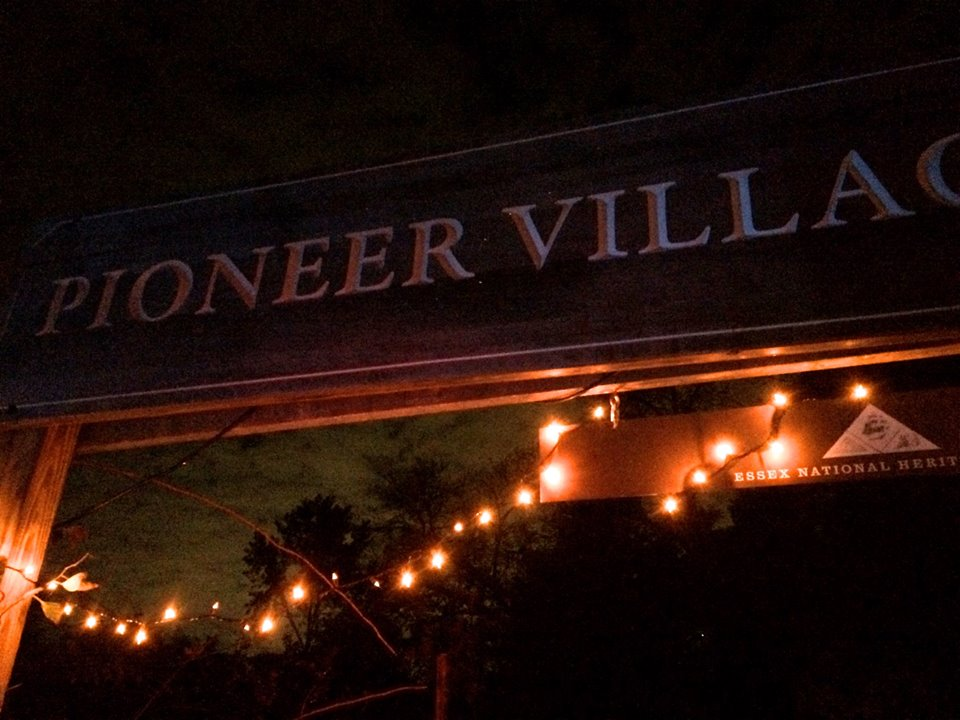
It’s October and people are pouring in to Salem, Massachusetts from far and wide to capture that sinister, Puritan feeling for which New England is famous. Sadly, right around Halloween, the main thoroughfare feels more like a nightclub than The Crucible. But just outside Salem, there’s Pioneer Village, one of America’s first living history sites, where you’ll find a gated village full of candlelight, rustic buildings, and tangled shadows. This is the site for Intramersive’s first show, Daemonologie, and the fictional settlement of “Oakham.”
Daemonologie describes itself as a “game theatre experience, where the audience is responsible (or complicit) in the outcome of the story.” Based upon this concept, Daemonologie prepared attendees well for what to expect, with instructions to bring a flashlight and dress for the outdoors. I really wish more shows would do this: activate pre-existing knowledge, set expectations, and let people show up ready to play. They also succeeded at crowd control and staging despite the audience walking on paths in the dark. Colored glowsticks showed which of the four Puritan families each audience member was assigned to. And the performer to guest ratio was around 1:2.

First, a minister led us through an old-school Protestant church service. Then actors brought us into their homes and we witnessed family disputes, neighborhood arguments, and romances up close. During one scene, a mother and daughter argued about social status and ambition in the tight quarters of a rustic cabin, with herbs hanging from the ceiling; this scene was one of the best immersive theatre experiences I’ve ever had. Close proximity to the actors made the interaction visceral and uncomfortable. I felt stressed for the mother as she searched for the right things to say and stumbled over words she knew didn’t sound right. The daughter, in full Puritan garb, was sullen and conflicted like any other teenager. Her pleas made the year 1690 feel universal; I was a fly on the wall watching an age-old argument. A friend said she felt a similarly in scenes with the minister and his new family, all enacted in the tight quarters of Pioneer Village. The show was an intimate, well-constructed theatre performance with a personal, emotional quality that I haven’t experienced in other shows.

Daemonologie felt like “immersive theatre” in the tradition of Sleep No More or The Grand Paradise. Each audience member experienced different parts of multiple storylines. The orientation encouraged us to interact with the cast, but considering how strong the acting was it didn’t seem really necessary. I found it hard to find natural openings where it would be appropriate to interject and I didn’t want to interrupt the cast. One member of our group was interjecting a lot and we all found it a little grating, even though she was technically the one person doing what we were “supposed” to be doing.
Get Kellian Pletcher’s stories in your inbox
Join Medium for free to get updates from this writer.
SubscribeSubscribe
Daemonologie is both a beautiful theatre piece and an interactive game though it had room for improvement in a few areas. I came to the performance expecting more independence that just may not have been possible given the setting: a rustic pioneer village, in the woods, at night. We were constantly being given instructions on where to go, so we felt “rogue” if we deviated from our instructed path even briefly to search for evidence of witchcraft. Also, it felt like there just wasn’t time to both watch the stories unfold and search the set for clues. The setting, costumes, special effects, and story fulfilled the “immersive theatre” part of the equation beautifully but the interactive parts would be improved by giving the audience more freedom to explore. Despite a relative lack of agency compared to say, an escape room or a puzzle hunt, I still felt totally engrossed in the work. About an hour into the show, as our guide led us running through dark wooded paths of Oakham, my friend turned to me and realized how much time had passed. We were both so engaged, we thought the show had just started.
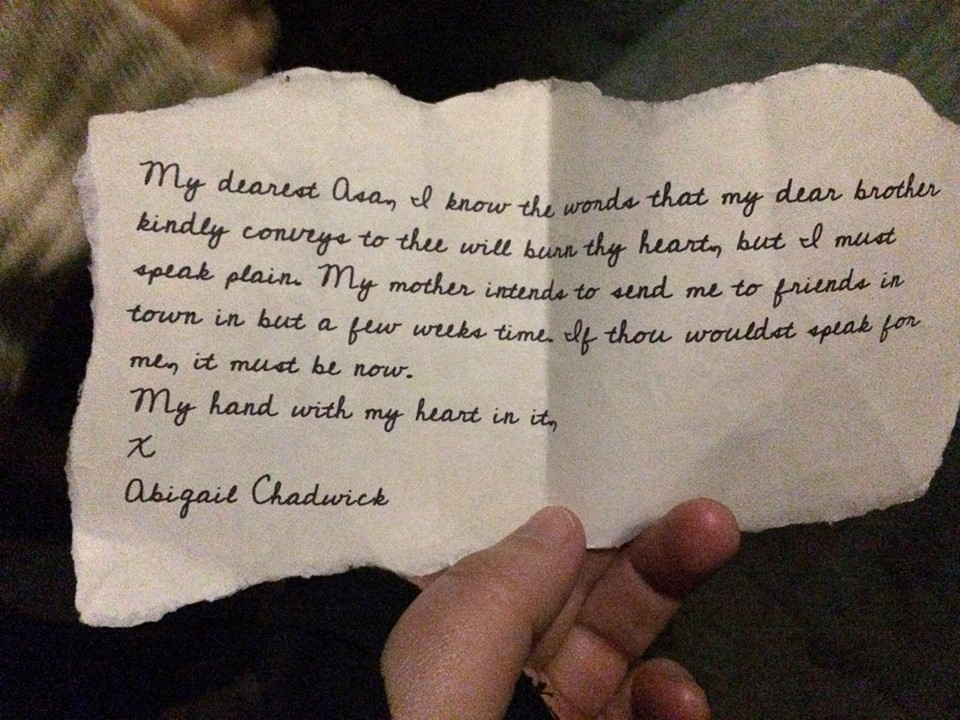
The show’s materials promised that the audience would have the power to “bring the real guilty party to justice” or “change a tragic outcome.” I attempted to steer Daemonologie’s ending to an unusual conclusion, but felt like I was course-corrected by the actors. During the final trial, a small group of us chose an unlikely cast member as the guilty party. The judge was surprised and claimed there was no evidence. A few audience members did come up with some evidence but the judge argued with us, until finally one of the other actors yelled, “It must be put to a vote!” But the voting process was a little rushed. And in the end less than half of the audience actually ended up voting. The performers proceeded to act out an ending that was good… but predictable. (I wondered if there were multiple endings to the show or if it would always steer to the same conclusion.)
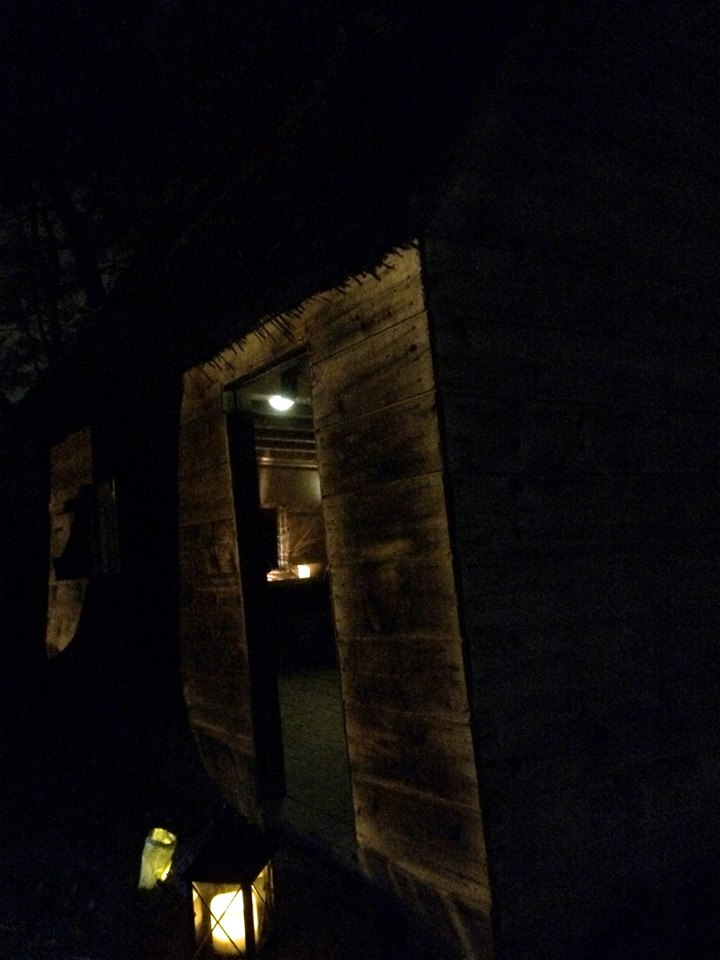
Overall, my party of puzzle fans had nothing but good things to say about the show. We talked about the show for nearly an hour in an eerie park lit only by street lamp afterwards, trying to decipher who the real “witch” was. The post-performance discussion was one of the best parts of the show.
Maybe a show doesn’t need to include a ton of audience interaction as part of the action. And maybe it’s not so bad to leave people with questions, especially if their friends might have the answers. While there were some areas for improvement in Daemonologie, I can’t wait to see Intramersive comes up with next.
Daemonologie continues through October 27. Tickets are $46.50.
No Proscenium is a labor of love made possible by our generous backers like you: join them on Patreon today!
In addition to the No Proscenium web site, our podcast, and our newsletters, you can find NoPro on Twitter, Facebook, YouTube, Instagram, and in our online community Everything Immersive.


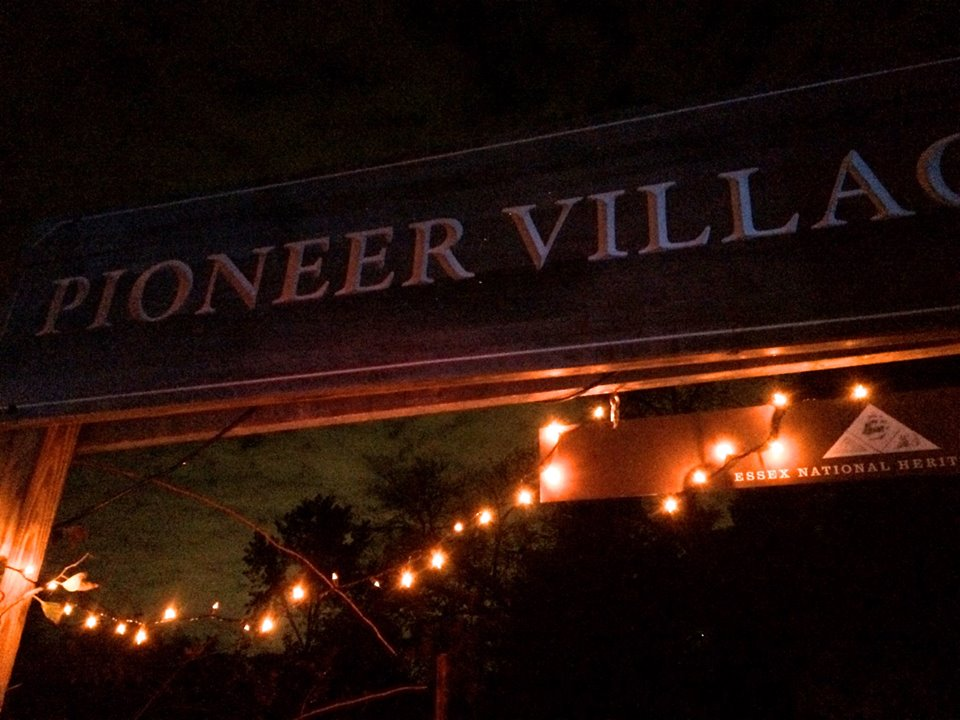
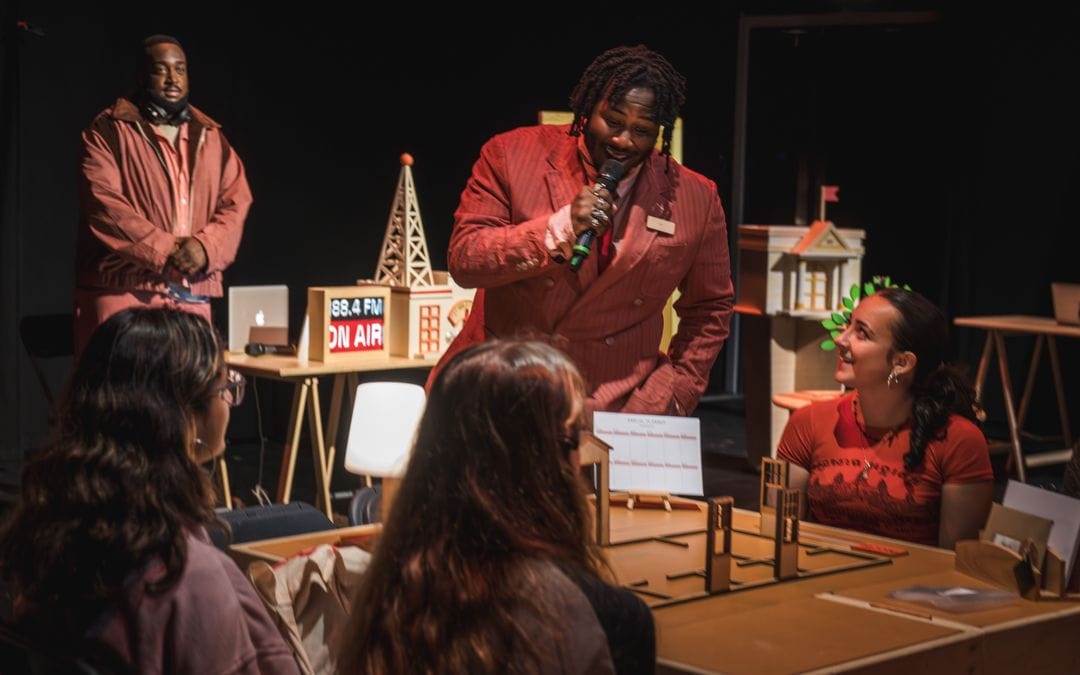
















Discussion